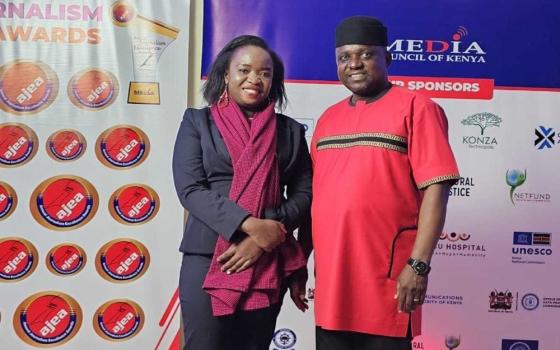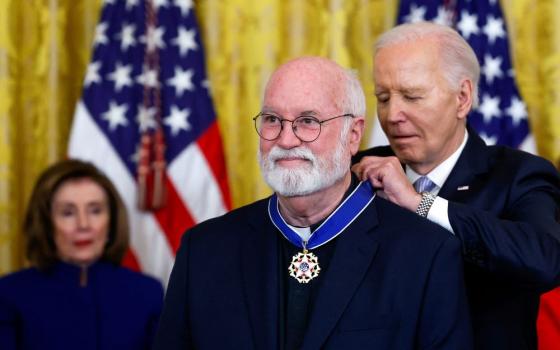What, Then, Is Liturgy? Musings and Memoir
By Anscar J. Chupungco, Foreword by Mark R. Francis and Keith Pecklers.
Published by Collegeville: Liturgical Press, 2010, $29.95 softcover
Although many others have written on the subject, the name of Anscar J. Chupungco is synonymous with the inculturation of the liturgy. One does not lightly pass up what Chupungco has to say about liturgical worship. His previous writing, while scholarly, is readable and accessible. This last book is something of a puzzle.
What, Then, Is Liturgy? Musings and Memoir contains some memoir but very little musing; at least if by musing one means the author’s opportunity to think unhindered by academic and ecclesiastical restrictions. The so-called musings that make up most of the text are really summaries of liturgical history and theology, which can be found in most standard textbooks on the liturgy. Chupungco does not intend to write a textbook. His summaries have a personal feel about them that keeps the reader’s interest. The memoirs are confined to Chupungco’s teachers in Rome, some of his experiences at the Pontifical Liturgical Institute and a few references to the liturgy in the Philippines. Not exactly an autobiographical sketch.
One would wish for more courageous musings. Chupungco seems to be looking over his shoulder and making it clear that he is a faithful son of the church. Every time he makes some kind of forward-looking assertion, he reminds the reader that he does not disagree with the hierarchy. It seems an unnecessary protestation.
There is a passing reference to the impact of social and ritual studies on the liturgy, but very little evidence that they have influenced the author’s thinking. For instance, his definition of liturgy does not move beyond what Pius XII put into Mediator Dei or what can be found in “The Constitution on the Sacred Liturgy.” His understanding of liturgy lacks the fullness that other disciplines can bring to the meaning of Christian worship. There is so much that is appropriate for the contemporary worshipers here that it is jarring to read worn-out statements such as “the earthly liturgy is a reflection of the heavenly liturgy.”
There really is nothing new in the book, although it contains much that is very helpful because it is so well expressed. There are whole sections that would work wonderfully in an introductory liturgy course. These are summaries of certain issues, clearly presented with the commonsense critique that others have offered but here is unencumbered by footnotes and other academic apparatus. Many of the liturgical technical terms such as anamnesis and epiclesis are explained simply and in their contexts. There is a great deal of the history of the liturgy, but it is scattered throughout the volume.
Among the various issues that I find problematic is Chupungco’s distinction between inculturation and creativity. For him, the translation of texts into a different language is an example of inculturation, while the composition of new texts is creativity and not inculturation. This distinction seems to reduce inculturation to mere adaptation.
There is much that is commendable about Chupungco’s work. The author’s section on the issue of translation in the Roman Missal at the present time is a masterfully clear summary of the matter. The segment on the sense of human embodiment and the sacarmentality of the world, the sense of the cosmic along lines developed by Teilhard de Chardin, is admirable.
Chupungco is especially good on what ritual language is.
Chupungco does raise some important issues for liturgy today. He writes:
The concluding chapter, which deals with liturgy and spirituality, is disappointing. Apart from repeating the well-known claims that the liturgy is the true source of Christian spirituality, that Christ is truly present in the sacraments, especially the Eucharist, and that all should be consciously engaged in the celebration, there is little more exploration of liturgical spirituality beyond listing its components, such as the sacraments, sacramentals, the word of God and the psalms. There is nothing about the psychological dimensions of the spiritual journey.
As Mark Francis and Keith Pecklers point out in their foreword, what Chupungco does best is to communicate his love of the liturgy and his enthusiasm for the reforms of the Second Vatican Council.
The book will be read with affection by his many students over his more than 35 years of teaching. Others who have read him in the past as someone who can offer possible answers to the question “What is the shape of the liturgy in the future?” will finish the last pages of the book no wiser than when they started. Would that the author had peered into the future in his musings!
The answer to the question “What, then, is liturgy?” cannot be found in the past even if it is the relatively recent past of 1963, when the “Constitution on the Sacred Liturgy” was proclaimed. The question in the present tense demands a present/future tense answer.
[Jesuit Fr. Jake Empereur is a liturgical theologian, former vicar and liturgist at San Fernando Cathedral in San Antonio.]







